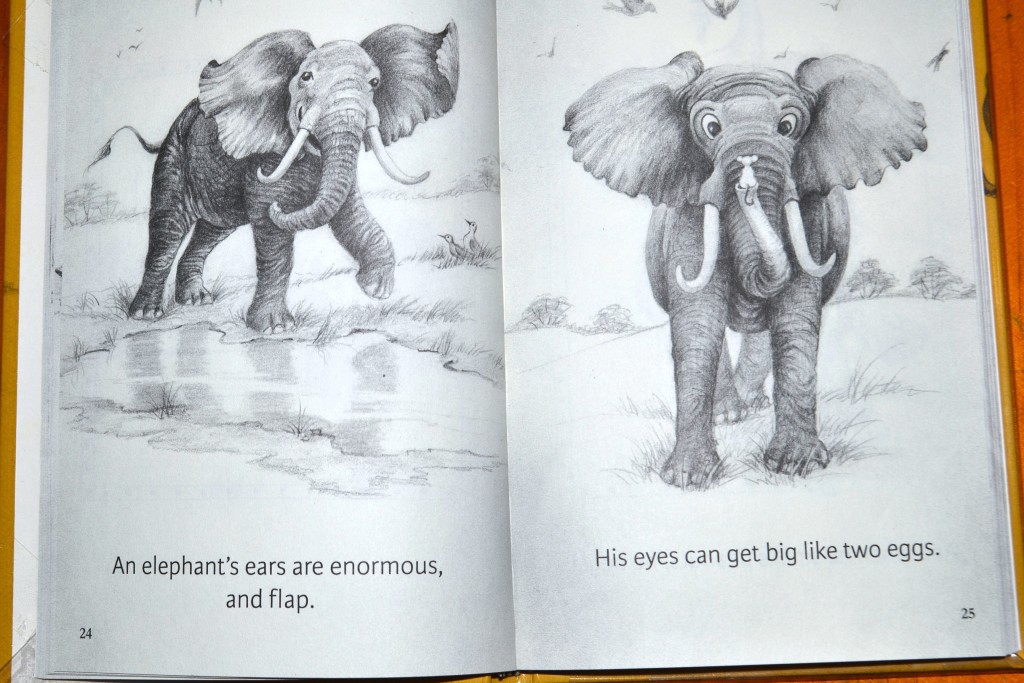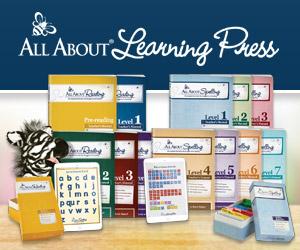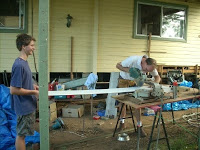
All About Reading: Pre-Reading
At the end of last year I used All About Reading Pre-Reading with our then six year old, our first experience of using a scripted reading program after years of teaching children to read without one. We are extremely happy with our decision and believe we have finally found ‘the missing key’ to our children’s previous reading experiences. We are currently using All About Reading Pre-reading with Bass, our four and a half year old, and are impressed anew of the ease and effectiveness of this program. Bass is our youngest child to begin reading, but he is keen and for him it’s a game.
Prior to teaching Jem to read, I have previously taught/am still teaching, our older seven children to read and they have learnt at various ages. Our oldest was reading chapter books by the age of seven, our next two boys were reading confidently by eight, and one had read Lord of the Rings numerous times by aged ten. Whilst some of our other children were much later at reading, by the time they were eleven there was no noticeable difference as to who read when. However I have long felt the process for some has been longer and more of a struggle than needed, that they are missing key ‘puzzle pieces’ which become more apparent later with ongoing spelling struggles.
What was my previous method?
Nearly thirty years ago as a teenager, I undertook a brief Spalding course and became convicted of it’s effectiveness. A few years later, then the mother of a baby, I completed a week’s course learning LEM Phonics, which essentially was an Australianised version of Spalding, it included extra sounds for some of the phonogram cards to accommodate our Australian pronunciation. When our children became interested in learning to read I began with teaching them the Spalding phonic sounds, with the Australian ‘extras’. However I never progressed far in teaching the Spalding spelling/writing which was part of the effectiveness of the Spalding method. In essence my children refused to co-operate, they loathed the markings. Admittedly also the Spalding Handbook was not laid out for ease of use, although thanks to the course I did know what to do.

What was my previous approach?
After the child learnt her/his phonic sounds, we progressed to sounding our words using a variety of simple readers, directing the child to call upon their phonetical knowledge to decode. I also regularly read poetry and nursery rhymes to the children, another component of learning to read. I understood this clearly when our second son learnt to read using nursery rhymes and Dr Seuss books. Some time after learning their sounds some of the children seemed to forget their sounds so in an aid to assist we created a phonics chart and ‘bingo’ sets, the former we use periodically as a chanting aid, the later for sound games. Thus we taught/are teaching the first seven to read, but I continued to feel that there were ‘pieces’ missing and that progress could be smoother than it was.
Did I need a Reading Program?
I’ve previously shared my enthusiasm for All About Spelling, so I was aware of All About Reading however I wasn’t convinced that I needed a reading program. I was particularly reluctant to switch to any program that would mean a change to our Australianised version of Spalding sounds as I firmly believed in them. When I read Sarah’s review I was convinced it was time to have a deeper look at All About Reading. When my research revealed that All About Reading/Spelling and Spalding both have their roots upon the Orton-Gillingham method, I was reassured I wouldn’t have to change our sounds and so nervously decided to purchase All About Reading Pre-Reading for our new first grader a six year old.

Which package did I purchase?
I ordered the Basic Package which includes the Teachers Manual, Activity Book, Letter Sound Cards, Picture Cards, Progress Chart, Capital Alphabet Chart and Lower Case Alphabet Chart. The basic package doesn’t include a tote bag, review box, animal stickers and a Ziggy Zebra Puppet. I decided that I could either do without the Deluxe items or use a similar item sourced locally.
Do I have to do any preparation prior to use?
No, everything is included in the package and ‘ready to go’. However considering I need the material to ‘do the distance’ for our three youngest, I felt it an investment to have the large alphabet charts laminated at a local shop and laminated the sound and picture cards myself with our home laminator.
What is the All About Reading Pre-Reading approach?
Each new letter introduced involves five steps.
- The alphabet song is sung and we point to the letter on the alphabet chart and encourage the child say the name for capitals, sounds for lowercase. They are also encouraged to locate and recognise the letters.
- The rhyming alphabet book has a short, witty rhyme to read, reinforcing learning with rhythm awareness.
- The activity book, which is permissible to photocopy for home use, has an activity sheet and suggested craft or activity. The activity sheet is often as simple as colouring in the letter. The craft may involve paint, wool or pipe cleaners, simple to prepare and execute. I’ll be honest here and even admit that sometimes we don’t do the activity because we haven’t the googlie eyes, the ink has run out of the photocopier or I can’t be bothered, gasp!
- The Teacher’s Manual includes clear instructions about the previous activities and a list of further suggested activities and a language exploration activity. The suggested activities include shaping playdough into letter shapes or using alphabet stamps of the Letter of the Day. Simple, no fuss, perfect for this busy mama. The Language Exploration activity involves playing rhyming card games with the picture cards. Pairing word endings, filling in rhyming words in sentences. Separating sounds, breaking up the beginning of words from the endings. This is pre-cursor to segmenting, introduced in Level 1.
- Read poetry and books for 20 minutes daily.

How were these steps different to my previous approach?
- The first difference was the program begins with teaching the recognition and names of capitals before teaching lower case sounds. I wrestled with making this change, you’re possibly shaking your head in bemusement but this was a major shift for me.
- I’ve always read poetry, nursery rhymes and books with rhythm, so this wasn’t different. Although these rhymes are particularly letter focused.
- I have previously done craft activities centered around letter/sound recognition albeit in a spasmodic manner. So not new but as it’s already organised for me and not difficult I’m far more consistent with doing this, when the printer has ink that is.
- The suggested activities are another addition to our reading approach. Scripted, easy, doable. But ‘the key’ the ‘missing piece’ to my previous approach however is the inclusion of rhyming games. This has been a game changer! Unrealised by me some of our children have not been automatically hearing the rhyme of words, they were not able to break down words into individual soudns, there were missing skills in their kit. It all began to make sense as to why some of our children had struggled with reading, we hadn’t been playing rhyming games!! I can’t express my excitement here enough!!
- Reading poetry and books daily was already part of our routine, so no changes there.

What about Australian/American differences?
As I shared previously we have added a few extra sounds for a couple of the vowels to accommodate our pronunciation (courtesy of my LEM phonics course). Occasionally a rhyming card grouping may not make sense with our pronunciation, I either gloss over or comment to the child that “oh that’s an American pronunciation” and move on.
What are my Australian Sound additions?
AAR Pre-Reading introduces lower case letters by learning the short vowel sounds first, the other vowel sounds are introduced in AAR Level 1.
However all the years of Spalding/LEM are ingrained, so I’ve continued to teach all at the beginning. Not perhaps a good idea for some children. Regardless of when the Australians sounds are:
a – short a as in at
long a as in navy
“ah” as in want
“aw” as in water
short o as in swan
o – short o as in odd
long o as in open
short “u” as in come
“oo” as in do
Isn’t it expensive?
Unfortunately yes. This is the biggest drawback to the All About Learning products. Sadly for Australians the cost is wildly expensive, due to shipping costs and the current poor exchange rate the cost for us is 1.5 to 2 times the cost! American friends may you never bemoan the cost again;-)
It is a huge investment, however, as the program is so effective I do believe it’s worth it. If you have multiple children ‘divide’ the cost between them and if you have one, your copy will easily resell.
Where can I purchase All About Reading Products?
You can order directly from All About Learning, they do ship to Australia.
*ETA: I have been advised that Educational Warehouse also stock All About Learning products.
Would I recommend this program?
Yes and yes!! Whilst I have successfully taught our other children to read without a scripted program, the ease in which Jem learnt his letters and sounds and the brilliant rhyming games have completely won over this tentative purchaser. After completing AAR Pre-reading Jem was able to start AAR Level 1 with a skill set beyond just knowing his sounds.
Have you used any levels of All About Reading?
Please share your experience, I’d love to hear.
*Next week I’ll share our experiences with All About Reading Level 1.
Recommended Related Reading:
- All About Reading: Level 1. Our continued journey and review of Level 1
- Pam’s AAR review, Find and Fix the Gaps in Your Child’s Reading. I strongly empathised with her journey.
- Cassandra’s review, All About Reading Level 1. Extremely detailed review.
- Our Spelling Dilemma, where I talk about teaching spelling to older children with AAS
*This post contains affiliate links with All About Learning.










6 Comments
sarah
Thanks for this Erin. I have been thinking about using the all about reading products but didn’t know if i could justify the shipping , given I already have some Jolly Phonics products and Alphaphonics (a complete flop for our 5 year old). Educational warehouse’s prices seem pretty good in the scheme of options so maybe i will give it a go with pre-reading for our 3.5 year old (5 year old can tag along to fill some gaps, particularly the rhyming ) and level 1 for the 5 year old who already knows her phenomes but is having a lot of trouble getting blending (speech pathologist thinks it might be working memory).
Erin
Sarah
Apologies, some how I missed your comment long ago.
Did you end up getting AAR Pre-Reading? If so how did it go?
Amy Williams
Thank you for this explanation about AAR. I love reading how other families use the same curriculum especially in other countries.
Amy
Erin
Amy
A pleasure, I think each family would have their own unique addition.
Are you an AAR family?
Ofelia
How long did it take to do the Pre reading level ? I’m excited I just ordered this for my kids.
Erin
Ofelia,
Great question and trying to remember the answer, from memory about 6-9 months, but I’d imagine it would differ from child to child and also how much time you put into it. Smiling imagining your excitement, enjoy 🙂